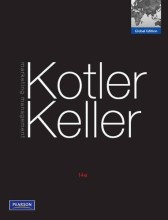Mechanisms of Perception: Hearing, Touch, Smell, Taste and Attention - Somatosensory System: Touch and Pain
6 important questions on Mechanisms of Perception: Hearing, Touch, Smell, Taste and Attention - Somatosensory System: Touch and Pain
What are the two largest and most thoroughly studied visual pathways?
1. Retina-geniculate-striate pathways: conduct signals from each retina to the primary visual cortex
2. Retina-geniculate-striate pathways: conduct signals from each to retina to the striate cortex via the lateral geniculate nuclei
How do the signals of the left visual field reach the right primary cortex?
1. From the right eye: Ipsilaterally from the temporal hemiretina.
2. From the left eye: Contralaterally (via optic chiasm) from the nasal hemiretina.
How are the lateral geniculate nuclei composed?
They consist of 6 layers each.
All 6 of the layers of both LGN receive information from all parts of the contralateral visual field of one eye.
This means; three layers receive input from one eye, and the other three layers receive input from the other eye.
- Higher grades + faster learning
- Never study anything twice
- 100% sure, 100% understanding
Where are most neurons that project to the primary visual cortex located?
Cortical layer IV; this produces a nice stripe pattern, when viewed in cross section, hence the name; Striate Cortex. THIS IS NOT PART OF THE LGN
What is an retinotopic organization?
This means that each level of the system is organized like a map of the retina. This occurs in the retina-geniculate-striate system.
How is the fovea proportioned?
Disproportioned, the fovea is relatively small, but about 25% of the primary visual cortex is dedicated to analysizing the input of the fovea.
The question on the page originate from the summary of the following study material:
- A unique study and practice tool
- Never study anything twice again
- Get the grades you hope for
- 100% sure, 100% understanding
































